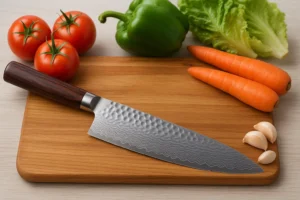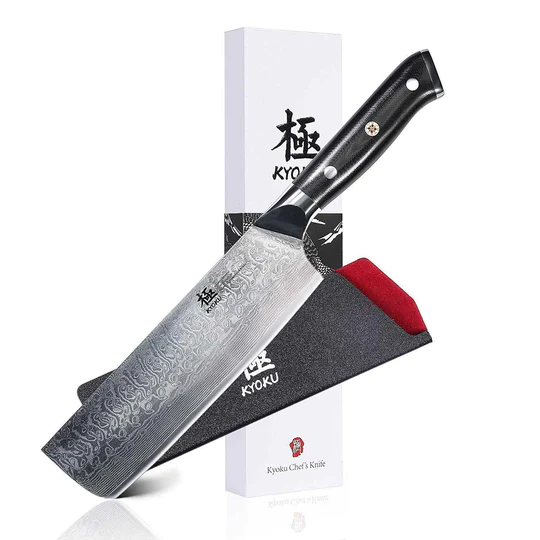


Obsidian knives stand out because of their incredible sharpness. Unlike metal, obsidian shatters into extremely thin edges—sometimes only a few atoms thick. This unique property allows obsidian knives to have much sharper blades than most steel knives or even surgical scalpels.
The obsidian blade’s natural ability to fracture smoothly makes it one of the sharpest knife materials. Ancient civilizations used obsidian tools for thousands of years, and even today, obsidian knives are used for their cutting precision.
Obsidian forms when felsic lava from a volcano cools very quickly. This fast cooling doesn’t allow crystals to form, so obsidian has a smooth, glassy texture.
You usually find obsidian near areas with recent volcanic activity. When hot lava reaches water or cooler air, it solidifies almost instantly, trapping minerals inside. Unlike most volcanic rocks that look rough or grainy, obsidian is usually shiny and can break with sharp, jagged edges.
Here’s a simple flow of how obsidian forms:
Obsidian is a natural volcanic glass. Its main element is silica, like common glass. But obsidian comes from a volcano, not a factory.
Because obsidian lacks a regular crystal structure, it is not as tough as other rocks, but it is much sharper when broken or chipped. Its glassy appearance and smooth feel come from its non-crystalline inside. Ancient people and modern blade makers choose obsidian for making very sharp tools and knives.
Obsidian also has special visual features. You might see it in deep black, dark brown, or even with lines and swirls, depending on which minerals got trapped inside when it formed.

Obsidian comes in several types, each with its own look and behavior. The most common is black obsidian, but there are others like mahogany, rainbow, and snowflake obsidian. Each type gets its color from different minerals mixed into the molten rock.
Each variety is used for different tools, ornaments, or decorative objects. Black obsidian is most popular for blades because its properties give it a very fine, sharp edge.
Obsidian knives have a blade edge that is many times sharper than steel. To understand why, you need to look at how obsidian forms its sharp edge, how it compares to modern steel, and what weaknesses it carries.
The sharpness of an obsidian knife comes from the way obsidian breaks. When you chip away at this volcanic glass, it shatters along curved surfaces called conchoidal fractures. These fractures create extremely thin edges, sometimes only a few molecules wide.
This process is different from how metal blades are sharpened. Instead of grinding, you split the glass at the atomic level. This gives obsidian blades a nearly perfect, smooth edge without the microscopic teeth that even the best steel knives have.
Because of this feature, the cutting edge of an obsidian blade can be up to five times sharper than the sharpest steel blades. Each blade has a unique shape.
When you compare an obsidian blade to a steel blade, you find big differences in performance and form. Obsidian blades can be thinner than 30 angstroms, while steel razor blades usually measure between 300 and 600 angstroms across their edges.
This extreme sharpness means obsidian knives slice very easily. In tests, an obsidian blade can cut materials with about half the force needed for a new steel utility blade. Kitchen knives and most steel blades are stronger but cannot reach this level of edge fineness.
| Blade Material | Sharpness (Angstroms) | Cutting Force Needed |
|---|---|---|
| Obsidian | ~30 | Lower |
| Steel (razor) | 300–600 | Higher |
Obsidian is incredibly sharp but also very brittle. Brittle materials like obsidian break or chip easily under pressure, making them much less durable than steel knives.
A steel blade can flex and bend a little without breaking, but an obsidian knife can snap or lose its edge if dropped, twisted, or pressed hard during use.
This brittleness means the sharpest knives can’t handle tough tasks or heavy-duty work. You need to use them carefully because the cutting edge is both ultra-sharp and fragile. For this reason, obsidian knives are rare outside of specialty uses, like in some surgeries or as collector’s items.
People have shaped obsidian knives with skill and care for thousands of years. They used these sharp tools in daily life and for special tasks, from hunting to medical surgery.

You make obsidian knives through a process called knapping. This means breaking and shaping rock to create a specific tool. The maker uses another hard object, like antler or stone, to apply controlled force on the obsidian.
There are two main steps:
This process is called lithic reduction. The maker repeats these steps, shaping a thin, razor-sharp blade that can cut with a single edge. Because obsidian breaks in a predictable, glass-like way, the finished blade can be much sharper than metal.
Ancient cultures relied on obsidian for more than just knives. Hunters made arrowheads and spears by carefully crafting the obsidian into pointed tips. These tools gave them an advantage in hunting and fighting.
Obsidian arrowheads have been found in places like the Near East and Mesoamerica. The sharpness helped hunters bring down game with precision. Warriors also used wooden clubs set with obsidian blades, such as the Aztec Macuahuitl, which could cause serious wounds.
Obsidian was also used for everyday cutting tools—from scraping hides to processing food. Its sharpness and easy shaping made it popular before metal tools became common. You can learn more about these uses and their impact on ancient societies at Historic Mysteries: Obsidian: Razor Sharp Tools of the Ancients.
Today, obsidian is still valued for its sharpness. Some knife makers and collectors craft obsidian chef’s knives and blades. But obsidian really stands out in surgical scalpels.
Certain surgeons and veterinarians use obsidian blades during procedures. These scalpels can make cleaner cuts than steel and may cause less tissue damage. Surgeons sometimes choose them for delicate tissues because they allow for more precise incisions that may help healing.
Obsidian tools bridge ancient and modern worlds. By keeping the knapping process alive, you can see how a tool first shaped in the Paleolithic still finds uses in medical work today.
Obsidian knives can achieve a much sharper edge than most metal blades, making them unique for cutting tasks and even in medicine. However, they have clear limits when it comes to everyday use and durability.
Obsidian is volcanic glass, which means it lacks a crystal structure. When you fracture obsidian, it breaks with sharp, thin edges at a microscopic level. This quality allows you to shape it into a blade with an extremely fine and sharp edge—much sharper than most steel blades.
Diamonds are harder and can also make very sharp edges, but obsidian knives can have an edge many times thinner than steel and can even be sharper than most diamond-edged tools. The edge of an obsidian blade can be just a few nanometers thick, letting it cut very efficiently compared to metal.
Some surgeons use obsidian scalpels because their edges are much finer than steel. An obsidian blade can make more precise cuts, which may reduce scarring for patients. Wounds can also heal faster when cut with an extremely thin and sharp edge.
Obsidian is much more brittle than steel or other metals. While it is very sharp, it is not as durable and can chip, crack, or snap with regular use or under force. Metal knives last longer and withstand tough conditions better.
You can use obsidian knives for light cutting, but they are not practical for normal kitchen or outdoor use. Their brittle nature means they break or become damaged easily. Obsidian knives work best for specialty tasks where maximum sharpness is needed, not for chores that might damage the edge.
To make an obsidian knife, you start with a large piece of obsidian and break it using a technique called knapping. In this process, you strike and chip the glassy rock to form a sharp blade. Skilled knappers create edges so fine they cut at a molecular level.

Knife Buzz offers independent product reviews on a wide range of knives used in the kitchen, home, and outdoors. We make it easy for you to find the right knife at the best price.

Knife Buzz offers independent product reviews on a wide range of knives used in the kitchen, home, outdoors and at work.
The Knife Buzz Team are passionate about reviewing knives and we cater to a targeted audience that needs independent advice before purchasing.
KnifeBuzz.com may earn affiliate commissions on some pages of this website. Knife Buzz is a participant in the Amazon Services LLC Associates Program, an affiliate advertising program designed to provide a means for sites to earn advertising fees by advertising and linking to Amazon.com. Amazon and the Amazon logo are trademarks of Amazon.com, Inc, or its affiliates. When you click links to various merchants on this site and make a purchase, this can result in this site earning a commission. Other affiliate programs and affiliations include, but are not limited to, Google AdSense.